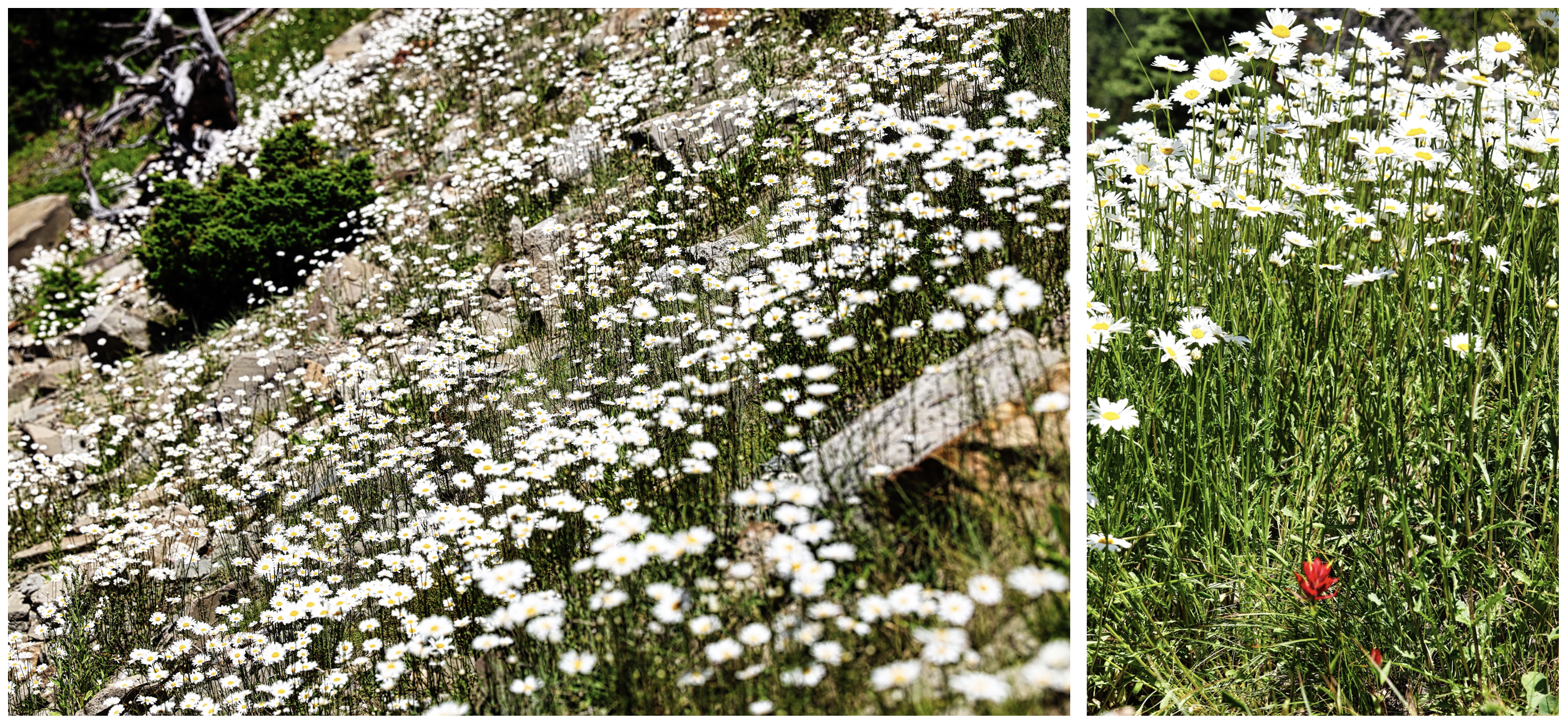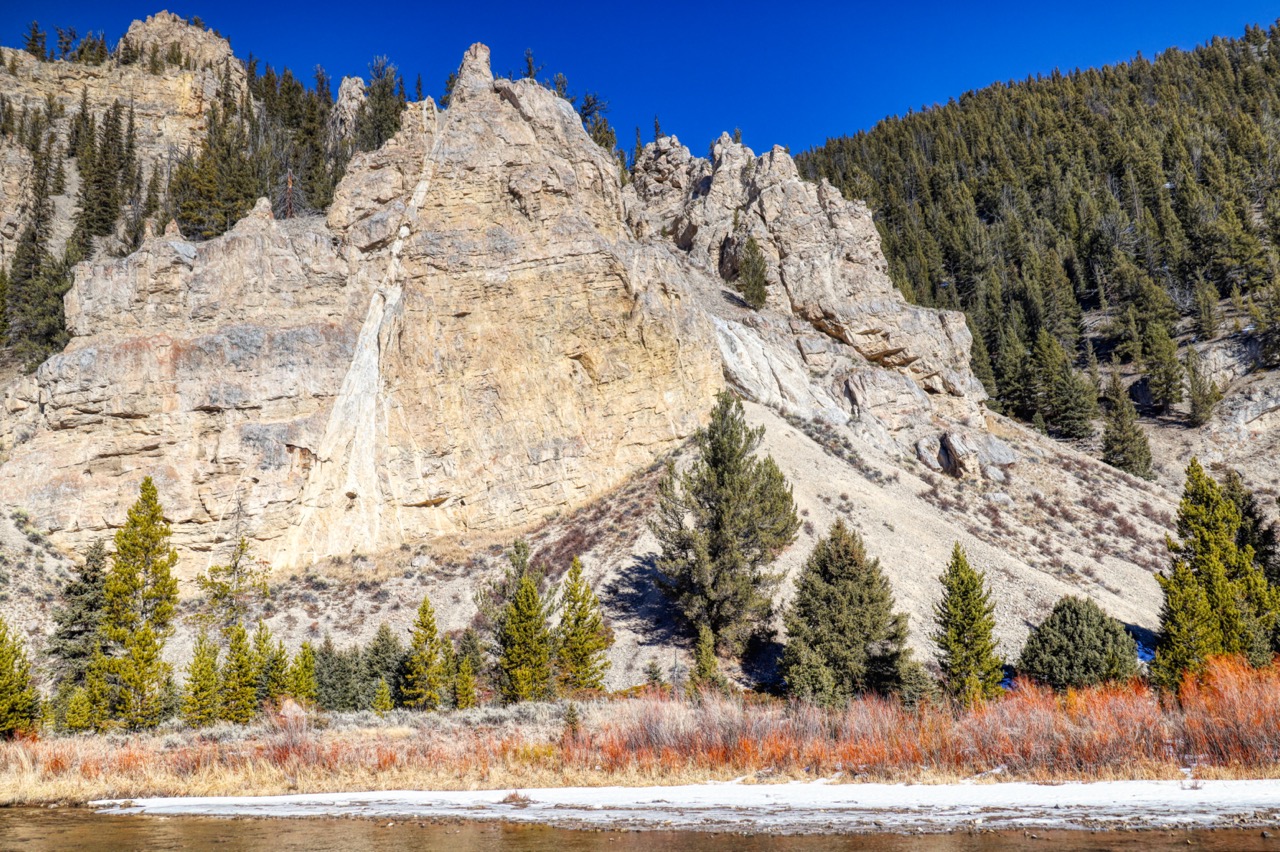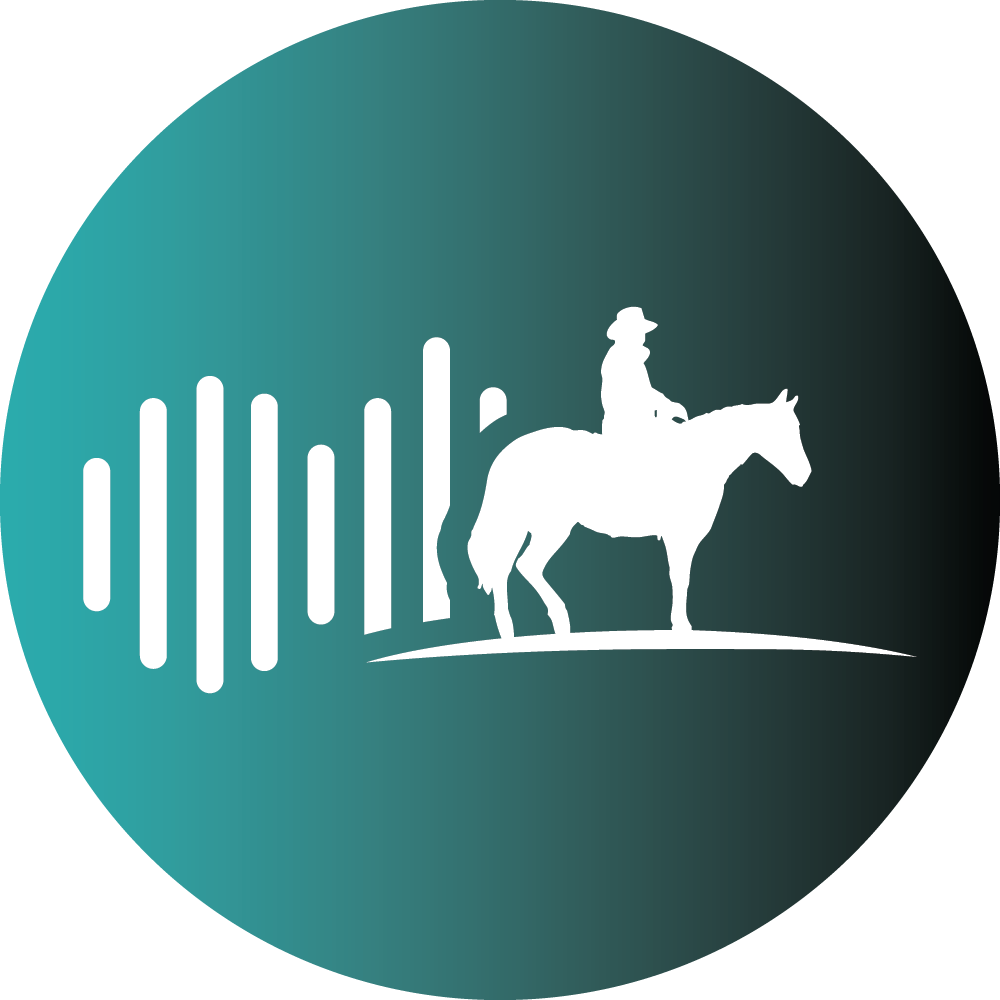By Paul Swenson EBS COLUMNIST
A good friend asked me a couple of weeks ago about Snowflake Springs—how it was formed, and where the water comes from.
About 18 miles south from Big Sky on U.S. Highway 191, Snowflake Spring makes its grand reveal just before the Yellowstone National Park boundary. On a cold winter morning it steams and streams down the hillside just across the Gallatin River from the highway. The water that flows out of the hillside has a constant temperature of 54 degrees Fahrenheit, so during our cold winter days it produces quite a bit of steam. This influx of warm water keeps the river ice-free until the cold Taylor Fork contributes to the mix.

The chemistry of the water coming from the spring shows no surprises. It contains an abundance of calcium ions, carbonate ions, sulfate ions and magnesium ions that one would expect to find from water that courses through limestone. But an interesting ion found is tritium, known as Hydrogen-3. Most hydrogen atoms have just a single proton, but H-3 has two additional neutrons. It’s not rare, but when found and measured it can tell a hydrogeologist the length of time between the water percolating into the ground and it being discharged at the spring. In Snowflake Springs’ case it shows modern recharge. In other words, the water that comes out of the spring has been in the ground for a short time, less than a year.
So how does the water get into the ground and then back to the surface? In normal winters our region usually gets a lot of snow. The water content of the snow usually equates to around 20 inches of water. In the spring and early summer as the snow melts slowly, its water percolates through the soil and loose rock at the surface until it reaches a rock formation that has been fractured by faulting or folding. The photographs show a limestone formation with its bedding horizontal to the north of the spring. The bedding then gets folded to a nearly vertical orientation. The fractures created bybending of a brittle rock like limestone gives the water a path to take. The water then courses down gradient to where it intersects the surface producing a spring.

A permeable rock formation such as this limestone, known as the Madison Formation, is called an aquifer. These types of rocks can transport water for long distances.
Snowflake is a small regional example of an aquifer, but there are much larger examples.
For example, in South Dakota the Madison limestone rises from the Great Plains along the flanks of the Black Hills. This is where the recharge area occurs for this aquifer that then carries water for 100 miles or more to central and eastern South Dakota.
Closer to home, Giant Springs State Park in Great Falls springs from the Madison limestone. It carries water underground from the Little Belt mountains, 30 miles to the southeast, all the way to the Missouri River. Using tritium ion analysis of the spring’s water it is calculated that the water takes close to 3,000 years to traverse this distance.
On the way to Snowflake Springs the interior of a fossil spring can be seen in the cliff face to the east of the road. There is a vertical, light-colored band that consists of a vein of calcite crystals. Calcite is calcium carbonate, the major constituent of limestone. It forms when water dissolves limestone then redeposits it somewhere else in the water column. And if the water is hot, like in Yellowstone, the water dissolves a significant amount of limestone then deposits it as travertine in terraces like at Mammoth Hot Springs.

So if you want a little spring-time in the middle of winter, take a beautiful short drive up to see Snowflake Springs. The open water produced by the spring attracts a whole host of wildlife and birds. It is not unusual to find moose, elk, or bighorn sheep standing in the spring munching on watercress. There are also ducks, water ouzels (American Dipper), and Bald Eagles that spend the winter here.

Paul Swenson has been living in and around the Big Sky area since 1966. He is a retired science teacher, fishing guide, Yellowstone guide and naturalist. Also an artist and photographer, Swenson focuses on the intricacies found in nature.














